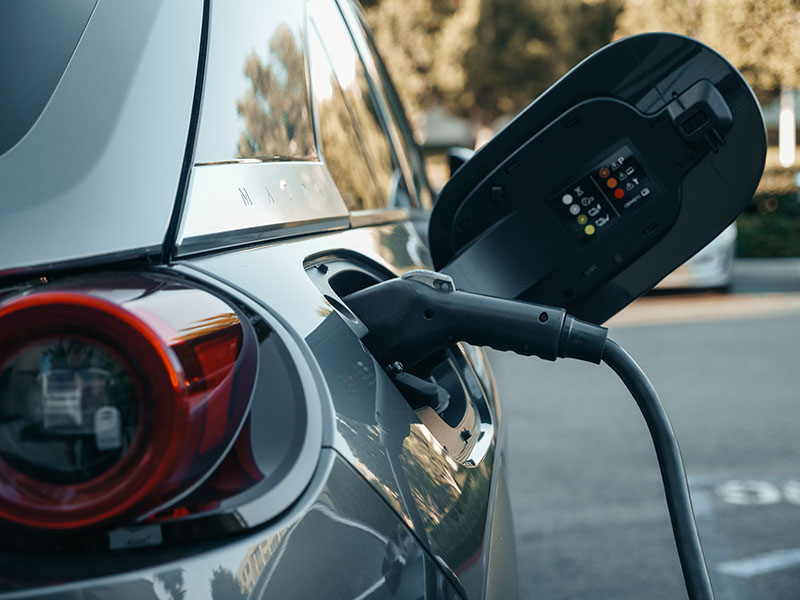With the ever rising cost of living, it’s important to help lower income families to benefit from cost savings wherever possible. New Electric Vehicles (EVs) have much lower running costs than conventional cars, making them cheaper on a total cost of ownership basis than new petrol and diesel cars.
A study, based on analysis by Element Energy, shows that low income households in the UK could save a whopping £3,000-£5,000 per car if they were to buy or lease a used EV1. That’s compared to the cheapest diesel vehicle on a total cost of ownership basis.
Unfortunately, because EVs are relatively new to the market and it’s expensive to buy products in early technology markets, people who have the financial means are leading the way and households in lower income brackets are being left behind in the transition to EVs.
It’s time to turn the tables and help lower income families benefit from the cost savings that EVs can deliver in the long-term. But before we take a look at how energy companies can help make that happen, let’s take a look at the sums and numbers involved.
What are the cost benefits of an EV?
It’s not surprising that households in the top 20% income bracket in the UK own over half of the EVs sold. In fact, only 4% of EVs sold in the UK are owned by households in the bottom 20% income bracket1. What’s more, households in the bottom 20% of the income range spend around 10% of their income running their vehicles. That’s compared to just 5% in the highest income group1.
Households in the bottom 40 per cent of the income range mostly buy second hand cars, which means they’re stuck using vehicles that are polluting and expensive to run. A household in the bottom 20 per cent of the income range spends around £300 a year on repairs and maintenance costs for petrol and diesel vehicles. A shift to an EV could save them up to £170 annually. In the U.S Consumer Reports estimated that in 2020 owning an EV cost $800 to $1,300 less for every 15,000 miles driven than owning a conventional car.
For lower income households, running a second hand and older car can stretch already tight budgets and contribute to financial insecurity. With lower running costs, EVs have the potential to considerably reduce the cost of motoring for low income households.
Obstacles to purchasing an EV
A recent study by the University of Birmingham revealed that a lack of consumer knowledge and incentives, patchy charging infrastructures, as well as anxieties about the distance EVs can travel on a single charge are hindering a mass transition from conventional cars to EVs. But one of the biggest obstacles is affordability.
It’s a similar story in the US. Evidence shows that many Americans are eager to transition to EVs and participate in a clean energy economy. In a recent nationally representative consumer report survey 71% of drivers said they were interested in getting an electric car. However, 48% said that lack of access to public charging infrastructure was holding them back and 43% cited vehicle cost as a disincentive.
What’s the solution?
How can we deliver the cost saving benefits of electric transportation to lower-income consumers? We must promote preowned EVs by creating educational campaigns focused on the benefits of buying a used EV, including lower running maintenance costs.
This is where energy suppliers have a responsibility. Energy companies are at the center of the energy transition and can play an important part in removing heavy polluting older vehicles off the road and helping customers take advantage of the cost benefits of an EV.
And here’s how Advizzo can help utilities…
- Customer segmentation – We can use psychographic segmentation to identify lower income customers who might be potential candidates for a second hand EV. Segmenting target audiences focuses marketing campaign efforts and achieves far more successful conversion rates.
- Promote the economic benefits of EVs – We can help educate energy customers on the cost savings that EVs can deliver – via a personalized customer engagement program. Timely and regular communications are delivered direct to the customer across multiple channels.
- Inform the right customers about relevant rebate programs and grants – We can target appropriate customers with information relating to grants, such as the plug-in car grant (PiCG) which help to make some popular electric car models more affordable. Utilities can also help customers make purchasing decisions based on energy tariffs that might encourage customers to consider installing electric vehicle home charging points.
- Provide information about second-hand EV market – The second-hand EV market is growing year on year. With city centers bringing is stricter measures on emissions and the 2030 ban on the sale of new petrol and diesel cars getting ever closer, more EVs are being bought which means more used cars are coming on the market. Keeping customers up to date and informed can only help to encourage lower income homes to investigate their options.
Buying a used electric vehicle isn’t going to be for everyone – but in this time of austerity, helping low income households that could capitalize on the long term cost benefits of an EV, has got to be worth the effort. Utility companies have a responsibility to help lower emissions and to help their customers lower their household bills. Get in touch to find out how our customer engagement programs can help!
Source ref
1https://green-alliance.org.uk/wp-content/uploads/2021/11/going_electric_how_everyone_can_benefit_sooner.pdf
